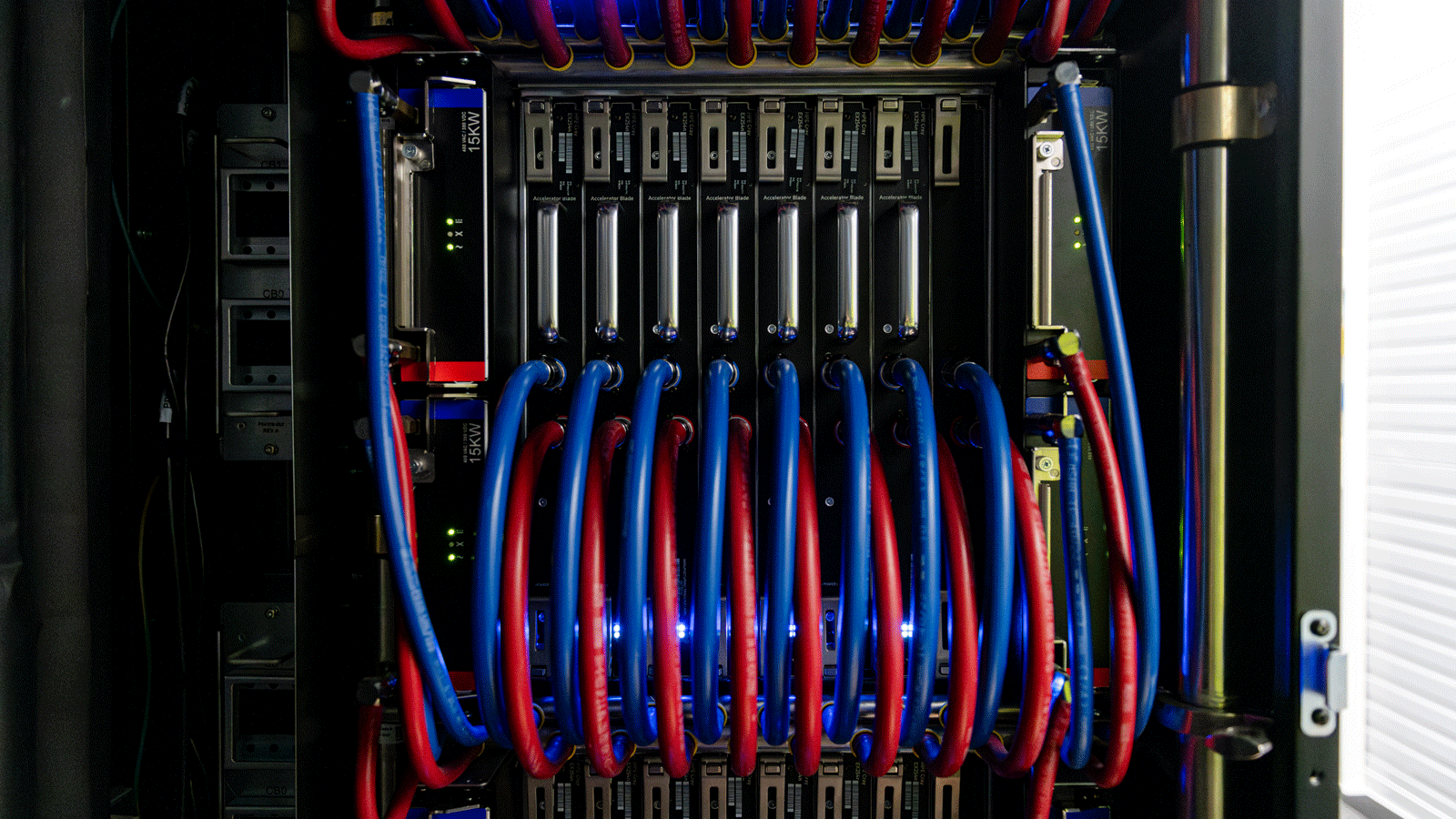
By Tanya Weaver, Wed 15 May 2024
Collected at : https://eandt.theiet.org/2024/05/15/uks-most-powerful-supercomputer-isambard-ai-officially-goes-live
The UK’s fastest and most powerful supercomputer officially starts operations at the University of Bristol’s National Composites Centre (NCC).
Supercomputers are seen as fundamental to unleashing the full potential of AI applications, such as training large language models at scale. They will enable researchers and scientists to solve extremely complex challenges that involve huge datasets and billions or even trillions of calculations to bring about advances in healthcare, robotics and climate research.
UK research can now take advantage of this supercomputing capability as the UK’s fastest and most powerful supercomputer – Isambard-AI at the NCC – has officially come online. Isambard-AI, currently in phase 1, is the result of a £225m investment from the UK government last autumn.

Christy Nunn
The supercomputer is built on an Hewlett Packard Enterprise (HPE) Cray EX-based system, which serves as the ‘liquid cooled cabinet’. HPE Cray EX forms the foundation of its computing architecture. At full capacity, Isambard-AI will be equipped with 5,448 Nvidia GH200 Grace Hopper superchips.
Isambard-AI currently delivers a Linpack performance (a measure of a system’s floating-point computing power) of 7.4 petaflops. Moreover, the supercomputer provides 647 petaflops of AI processing capability via 168 graphics processing units (GPUs).
“Assuming there are eight billion people on earth, and everyone performed one calculation per second, it would take 2.3 years for all eight billion people, working 24/7, 365 days a year, to do what Isambard-AI phase 1 could do in one second,” explained Professor Simon McIntosh-Smith, director of the Bristol Centre for Supercomputing at the University of Bristol.
“Isambard-AI phase 1 signifies the start of the Isambard-AI service. When the remaining 5,280 GPUs arrive at the university’s NCC later in the summer, it will increase the performance by a factor of 32,” he added.
Bristol’s Isambard-AI phase 1 has already appeared at position 129 in the latest edition of the top 500 list of high-performance computing systems on Earth, as published at the ISC High Performance 2024 event in Hamburg.
It is also one of the most sustainable supercomputers as the system has been designed with several components to ensure optimal performance and efficiency, including the HPE performance-optimised data centre as well as a heat reuse system, which transfers waste heat to surrounding buildings.
As Isambard-AI comes online, organisations such as the UK’s AI Safety Institute are expected to be among the first to take advantage of its capabilities for research.
In other supercomputing news, the Aurora supercomputer based at the US Department of Energy’s Argonne National Laboratory has officially surpassed the exascale threshold, measuring over a quintillion calculations per second.
Developed by Intel and HPE, the Aurora supercomputer is comprised of first-of-its-kind architecture, including 63,744 GPUs, making it the largest GPU-powered system in the world. This technology has enabled it to register 1.012 exaflops using 87% of the system’s 10,624 nodes.
“Hitting exascale is a huge milestone, but enabling groundbreaking science is the ultimate goal,” said Susan Coghlan, project director for Aurora.
It was announced earlier this week that the UK has now joined the European High Performance Computing Joint Undertaking (EuroHPC) , which not only allows the UK access to Europe’s cutting-edge supercomputing facilities, but also funding through the Horizon Europe-funded portion of the EuroHPC. This means that the UK’s R&D sector can now access grants under the scheme and opportunities for international collaboration.

Leave a Reply